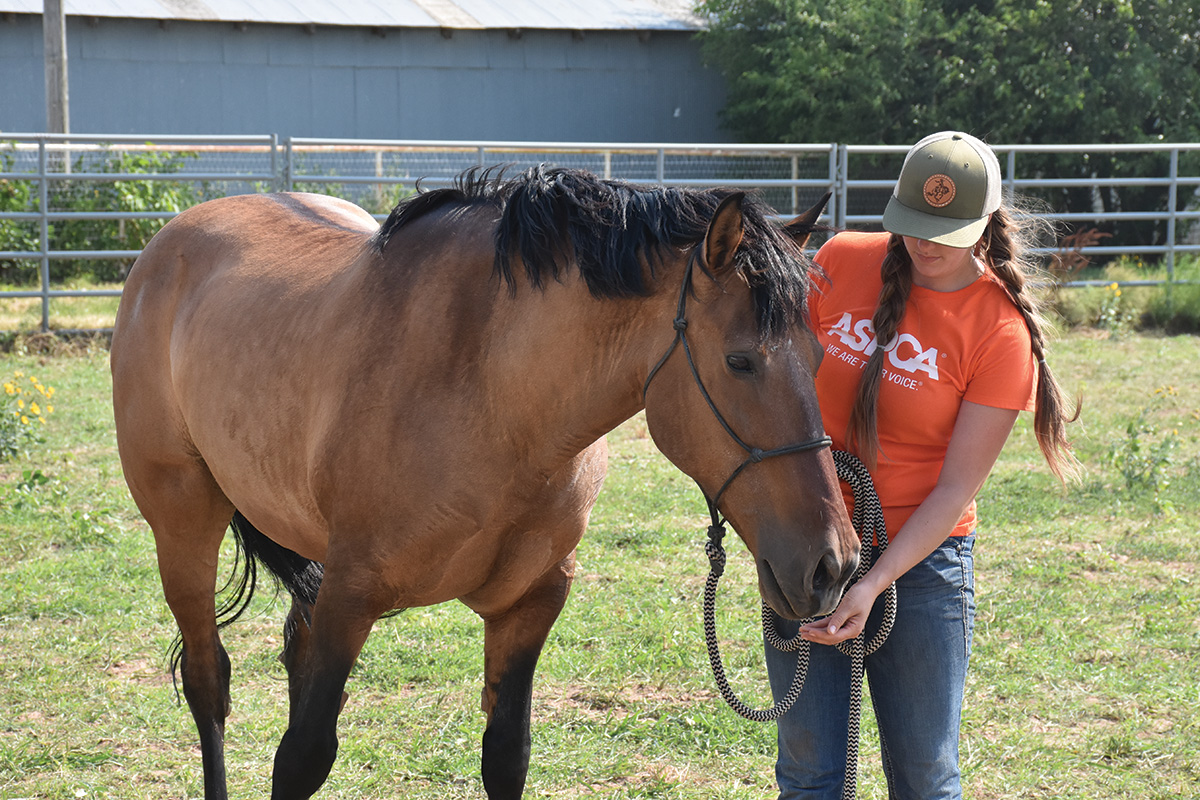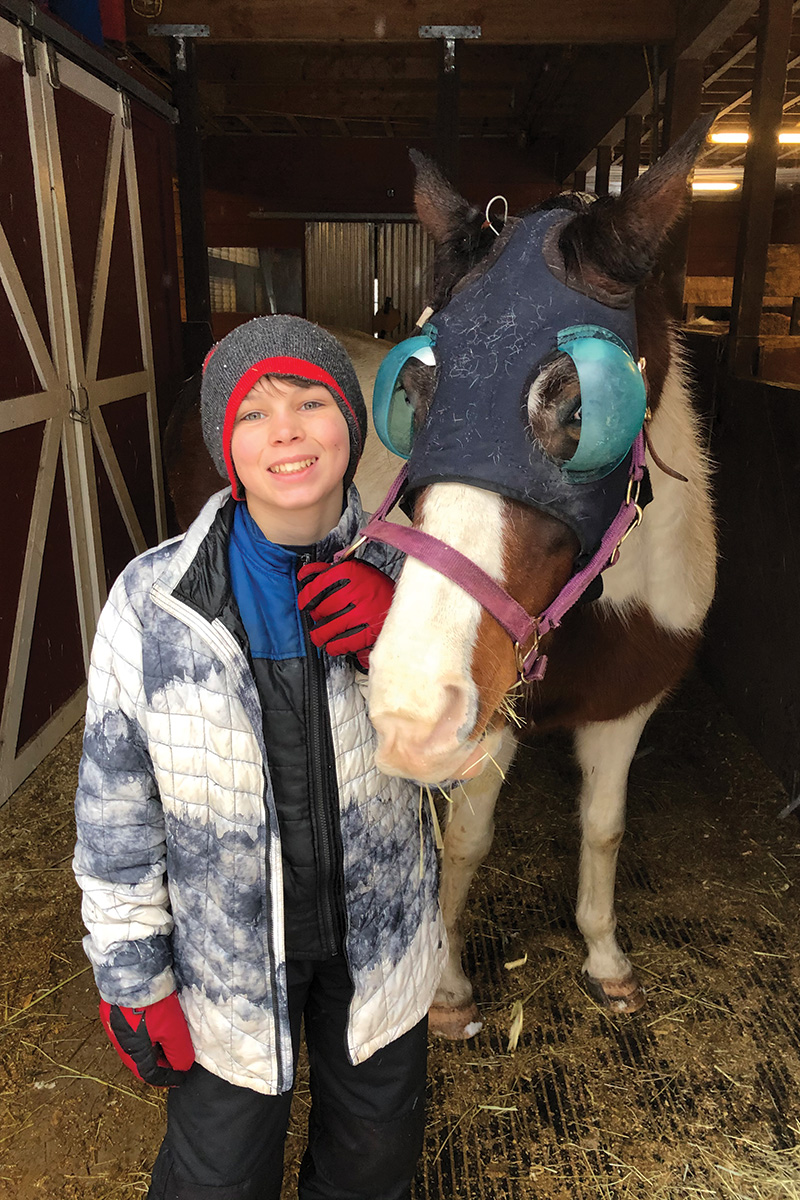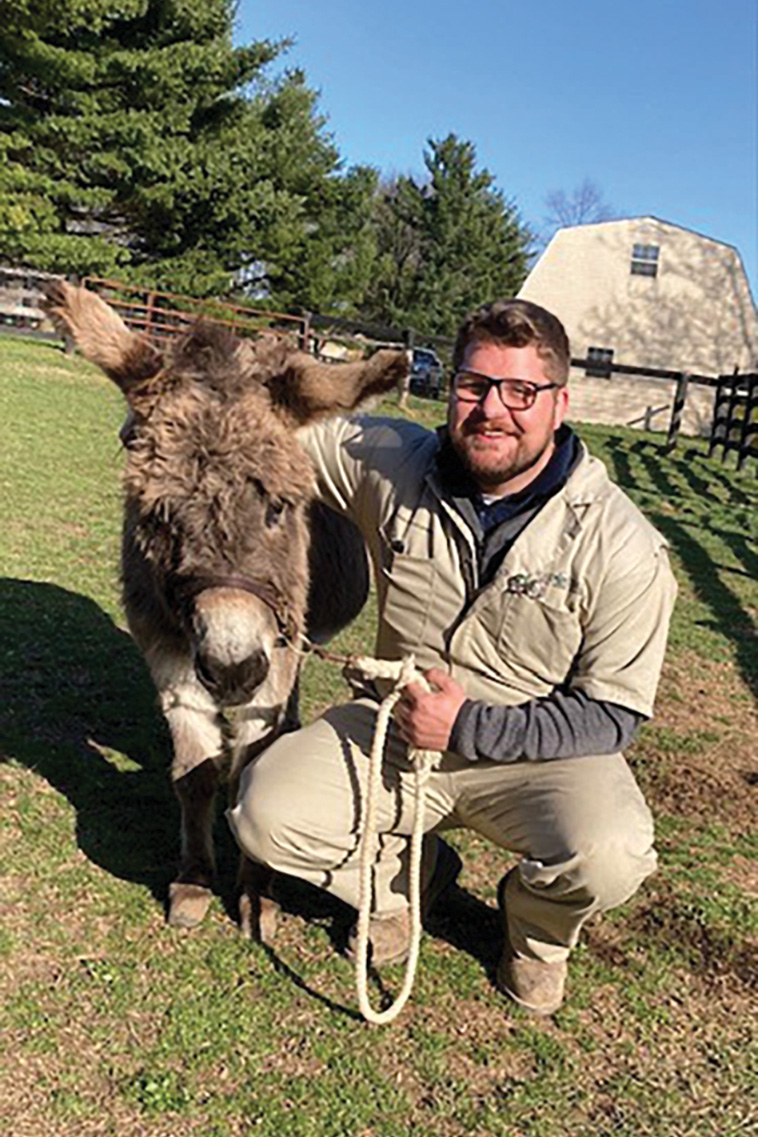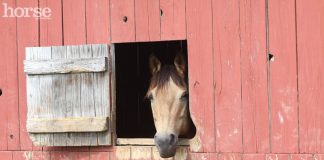
When a person encounters a speed bump like a financial crisis or health issue, it can be challenging to cope. But for horse owners, it’s even more difficult to manage these obstacles. Many don’t know where to turn for help, which puts their horses at risk. However, a growing number of resources are now available to assist horse owners having a hard time providing essential care for their horses. These safety net programs provide vital support that can help horses stay in their homes.
“Ultimately, we want fewer horses coming into shelters and rescues,” says Weiss. “Elevating the visibility that these solutions exist can help keep those horses from neglect or having to come to a shelter and be relinquished.”
One key program working to do just that is the United Horse Coalition’s Equine Resource Database (UHCERD). Launched in 2020, this searchable online database of over 1,200 horse rescues, sanctuaries and shelters puts help a click away. Owners can search by state and by type of help needed, from hay and feed to euthanasia and disposal, as well as rehoming and other forms of assistance.
Horse health issues are a common setback where safety net services can make a difference. The Vet Direct Safety Net program managed by the American Association of Equine Practitioners (AAEP) and The Foundation for the Horse in partnership with the ASPCA was created to help horse owners in need pay for emergency vet care.
Horse rescues are also working hard to meet people where they are and to provide broader assistance beyond relinquishing and rehoming horses.
Helping Horse Owners
Recent numbers from the Equine Welfare Data Collective, a research program of the United Horse Coalition, focus on quantifying and understanding the horse rescue pipeline. They reveal that 77 percent of horses coming into rescues and shelters are surrendered by their owners or confiscated by law enforcement. Owner finances are the most common reason reported for surrender, followed by owner health.
“This reaffirms through data what we already knew anecdotally—that to make the biggest change for at-risk horses and stem the tide, we have to start at the source, and that is by helping horse owners who have fallen on hard times,” says Ashley Harkins, United Horse Coalition (UHC) director. “This is at the heart of what UHC does, and why the UHCERD exists—to promote responsible horse ownership and provide options for horse owners.”
To date, the UCH’s Equine Resource Database and Covid resource sites have had over 24,000 visitors.
“Through this database, we are able to give horse owners a vital lifeline and point them in the right direction to get the help they need before their horse ends up at risk,” says Harkins, noting that there are programs available in every part of the country. “If people need help, we can direct them to whatever resources they are in need of, or barring that, with the people who can help.”
In 2021, the ASPCA expanded their services in Oklahoma, establishing the Equine Transition and Adoption Center pilot program to provide compassionate help and free services for equines in need, including subsidized veterinary care when it’s best for the horse to stay at home with the owner; compassionate euthanasia if needed to prevent suffering; or safe relinquishment so the horse can receive care before being placed in a loving new home through adoption.
This variety of services offers flexibility to provide the solution that’s right for that horse and owner at that moment.
“If you can’t keep your horse, we can take him and help him get a home,” says Weiss. “Or we can work together to see what solutions there are to help you keep your horse home. We see that as the solution, to be able to support horses within a community. It becomes a community resource.”
Tom Persechino, director of equine welfare for the ASPCA, notes that most horse owners reaching out to the Equine Transition and Adoption Center in Oklahoma have been able to hold onto their horses with just that little bit of support—often as simple as basic nutrition advice, treating an infection, managing minor lameness, or getting a horse up to date on vaccinations and routine care.
“If we can help horse owners get over whatever that challenge is that they’re facing in the moment, if there’s a safety net program that can help them get past that, we’ve proven that they can keep their horses long-term, they can keep them healthy, and they very rarely need to return for services or seek to surrender or relinquish them.”
Of all the services offered through the program, access to affordable vet care has proven to be significant. Simply providing support for metabolic issues like Cushing’s disease or treating dental problems can make a dramatic difference in keeping a horse healthy at home.
“Folks have reached out when their horse is losing significant weight and they think something horrific has happened, when he is simply not able to chew his food,” says Weiss. “That’s an issue that is easily resolved.”
Vet Direct Safety Net
Vet emergencies cause financial stress for both owners in need and veterinarians who want to be able to help them and their horses.
Through the AAEP’s Vet Direct program, equine veterinarians who register to participate can provide up to $600 of veterinary services per animal to assist horse owners in need. This allows vets to identify and provide care for at-risk equines in their communities and offer relief to horse owners who are unable to afford veterinary care.
“Vet Direct was launched as a way to see if there were horses that could remain in the home rather than being surrendered when they faced a medical issue at a time when their owner needed some sort of help due to circumstances they were facing,” says Keith Kleine, AAEP director of industry relations.
The program has assisted owners who were experiencing financial difficulty due to things like medical issues (themselves or immediate family members), loss of job or income, or other temporary situations. But long-term, Kleine says, if they could get help with some practical veterinary care, they could keep their horses.
The Vet Direct Safety Net covers urgent vet care such as wound treatment, eye issues, neurologic problems, choke, and non-surgical colic care, as well as euthanasia and disposal if recovery is unlikely.

Since its inception in 2017, the Vet Direct program has helped many equines. This includes horses like Trixie, who got the help she needed to overcome an ongoing eye issue. A donkey named Perk would have been euthanized after a dog attack without the financial support of Vet Direct. Another horse, Sugar, was lame and in so much pain she could hardly walk. Thanks to funds from Vet Direct, radiographs helped with a diagnosis, and with foam pads and regular trims she was able to walk comfortably again.

Tracking this program over the last few years shows that most horses receiving treatment through Vet Direct remain safe and healthy in their homes, according to the ASPCA.
For those cases where euthanasia is recommended as the most humane option to alleviate pain and suffering, Vet Direct is also able to help with those costs.
“The number of horses that suffer simply because the owner can’t afford euthanasia and disposal is significant,” says Weiss. “A number of owners hold off because it’s difficult to talk about. Having a veterinarian come to you through this program to navigate that [situation] is incredibly helpful.”
Asking for Help
Rescues are trying to be more proactive by providing short-term assistance to owners who qualify and acting as a resource in times of need, says Harkins.
The AAEP reminds horse owners that it’s important to ask for help before situations become dire. These organizations and programs are poised to help more horses if they are called upon before the animals are starving, says Kleine. Most importantly, there is no shame or judgment in asking for help. Vets, safety net administrators, and others involved in equine welfare recognize that hard times can happen to anyone.
“Asking for help is difficult, but it is incredibly admirable,” he says.
That’s why these programs exist—they want to provide assistance.
“When somebody raises their hand and says, ‘I’m having trouble and I want to do right by this horse and I need your help,’ that’s why we’re here,” says Weiss.
Horse Safety Net Resources◆ ASPCA Equine Transition and Adoption Center |





